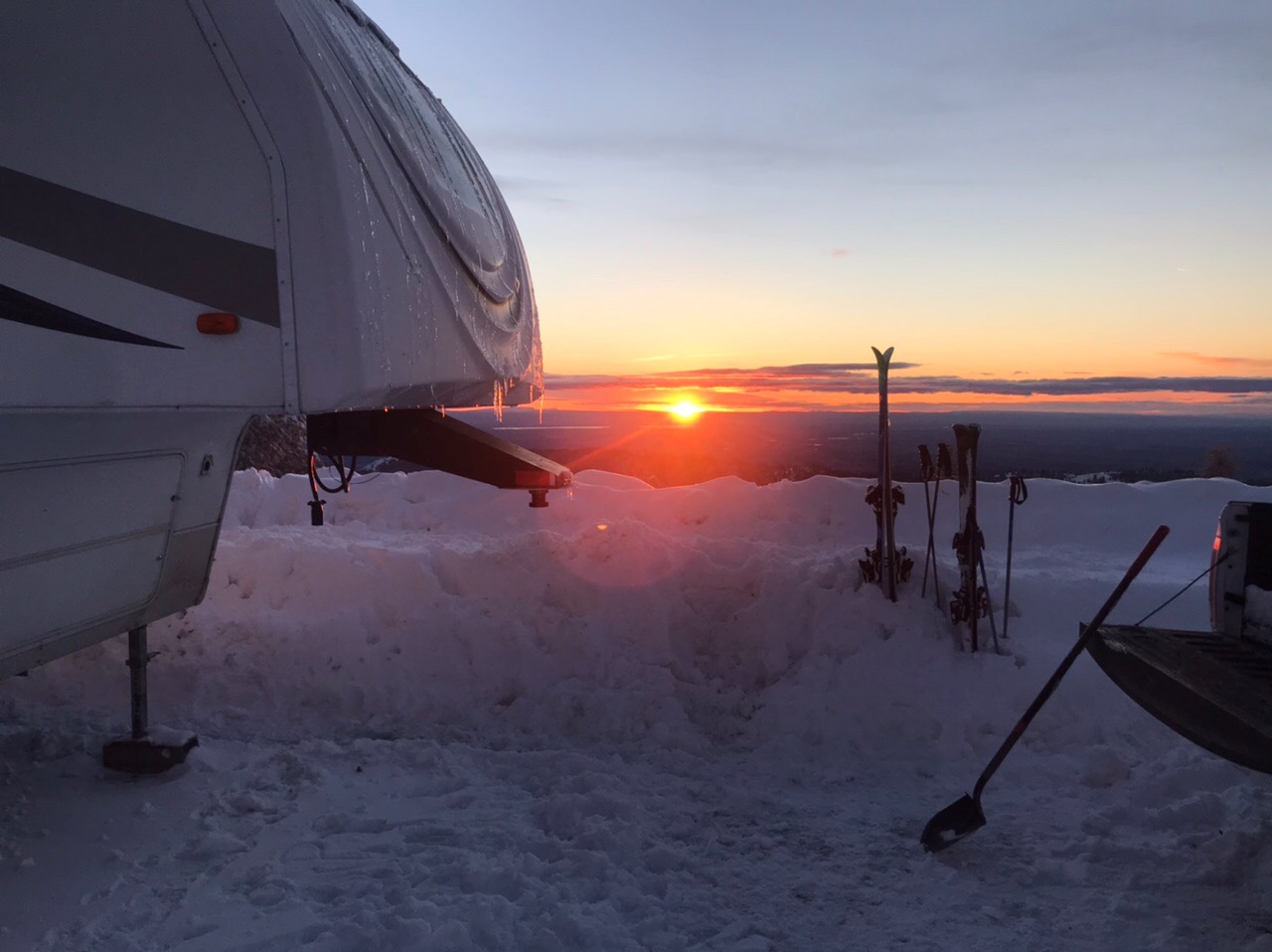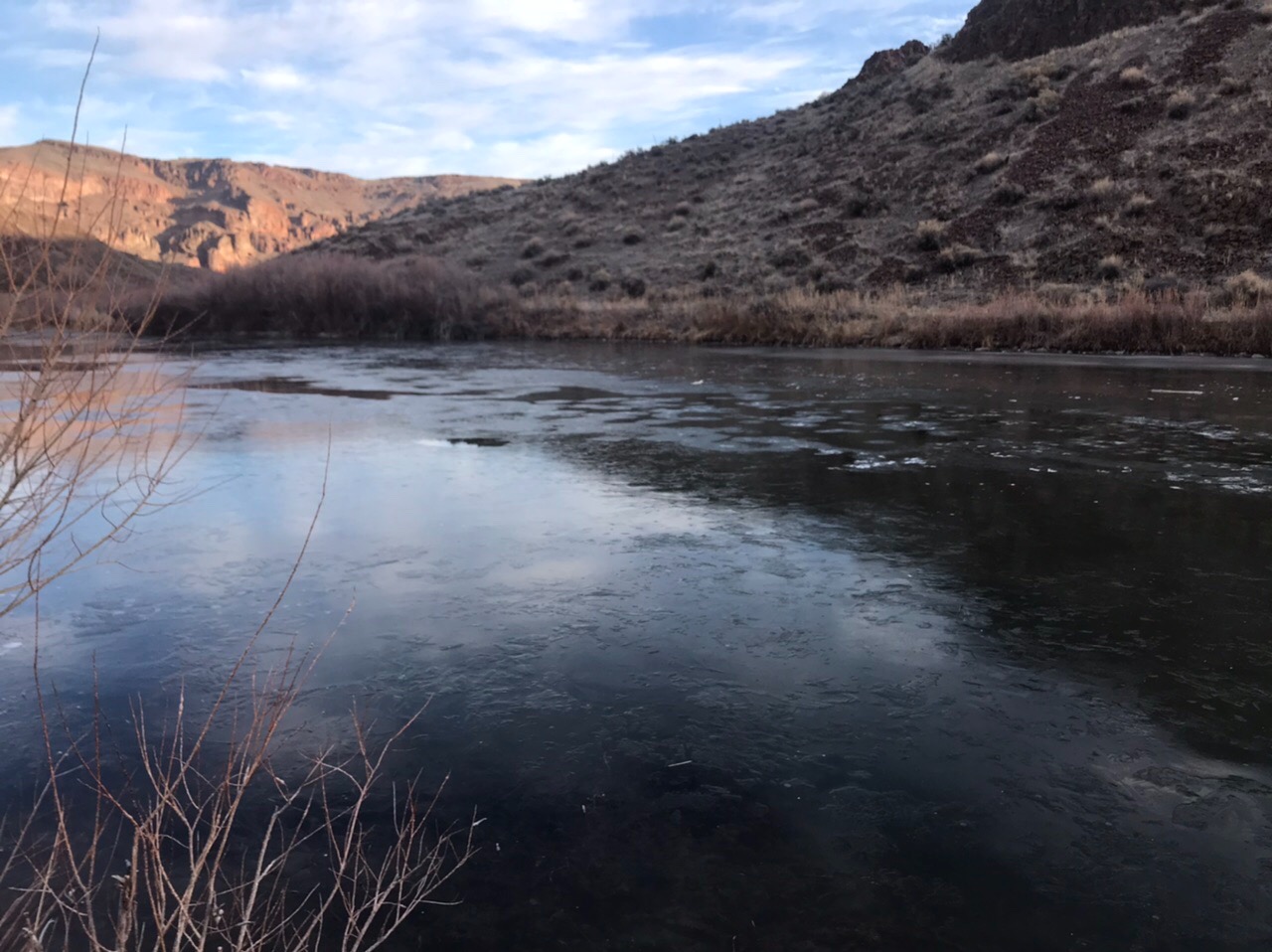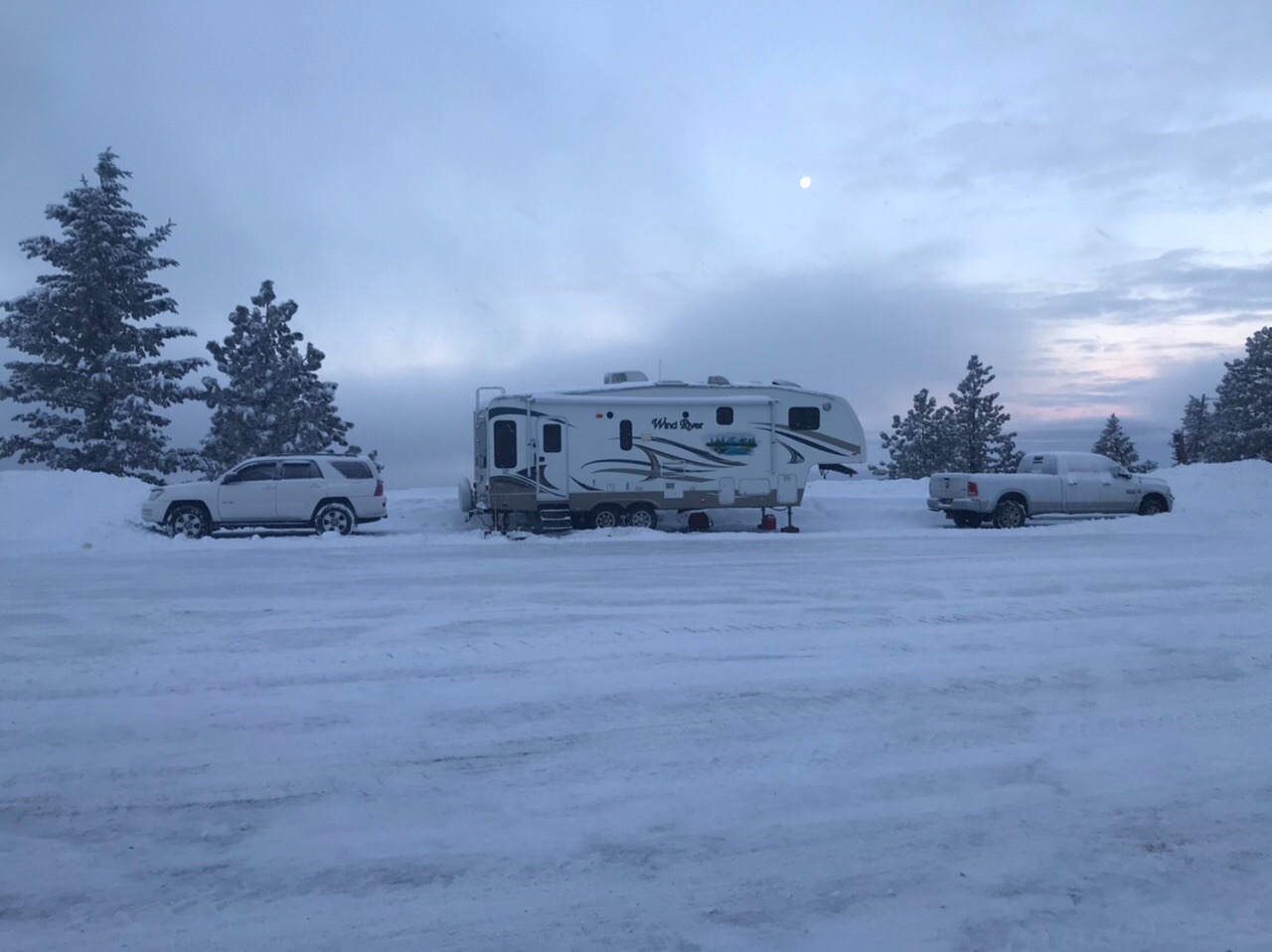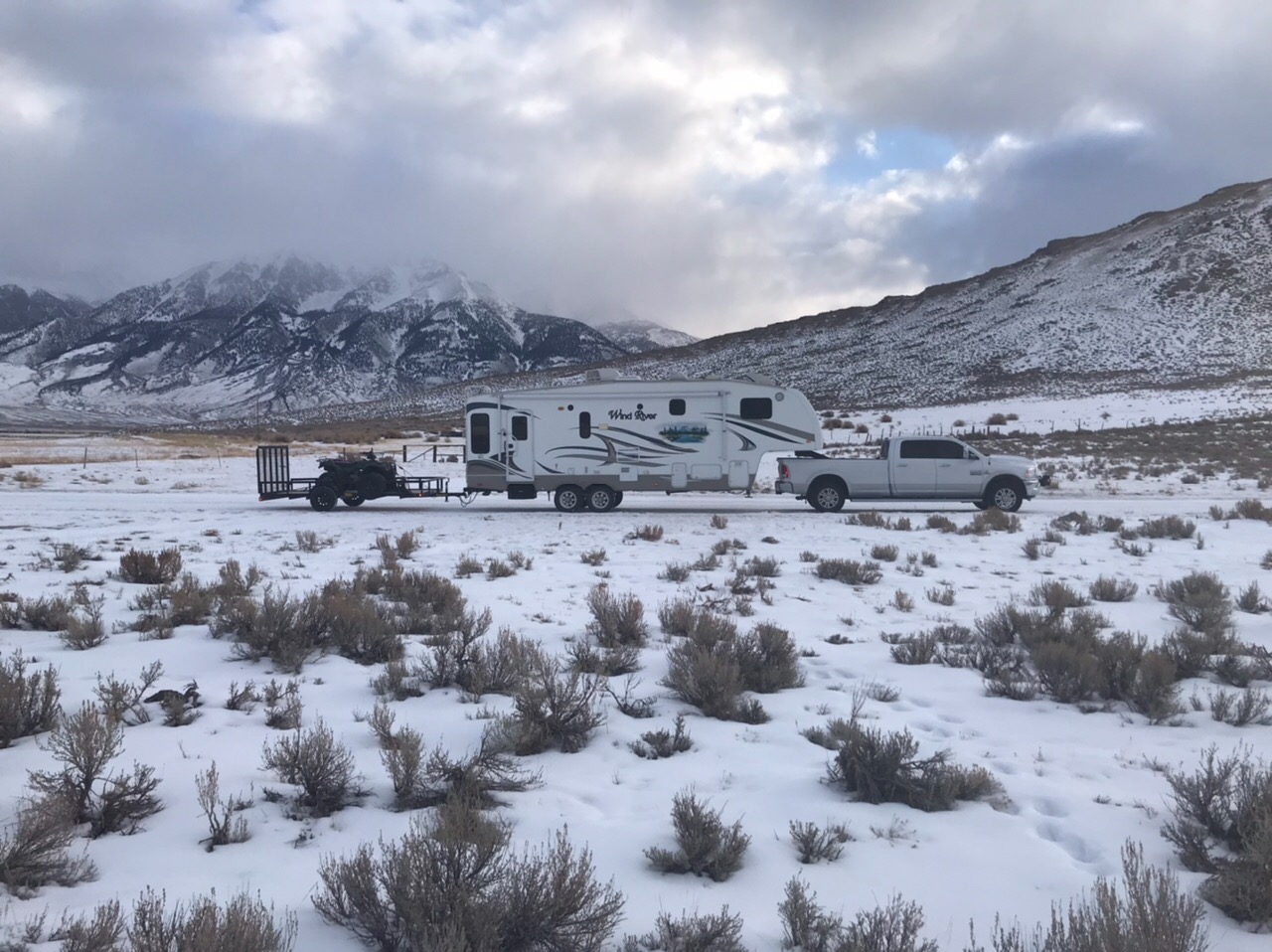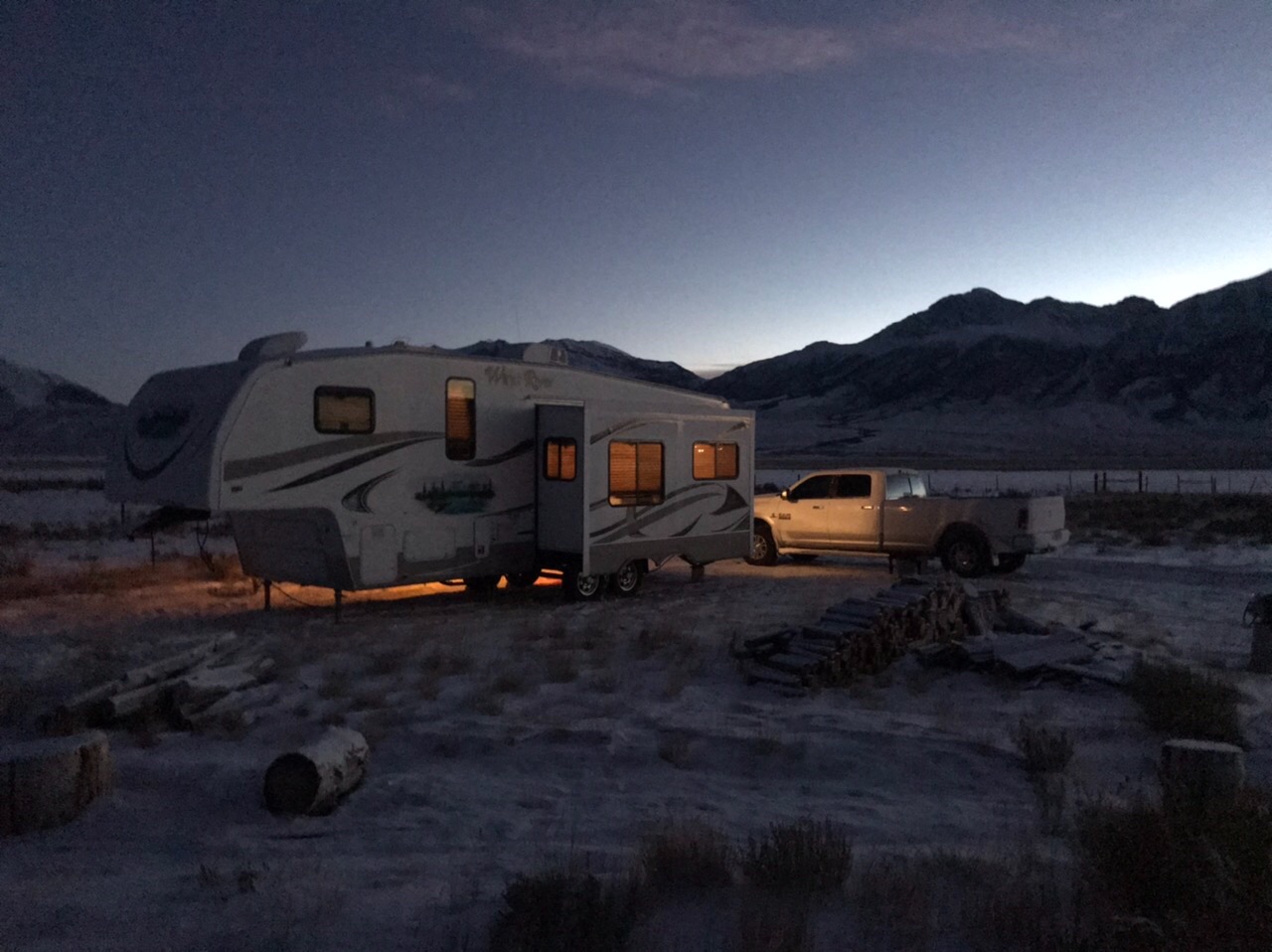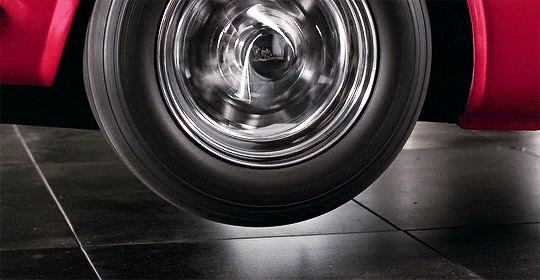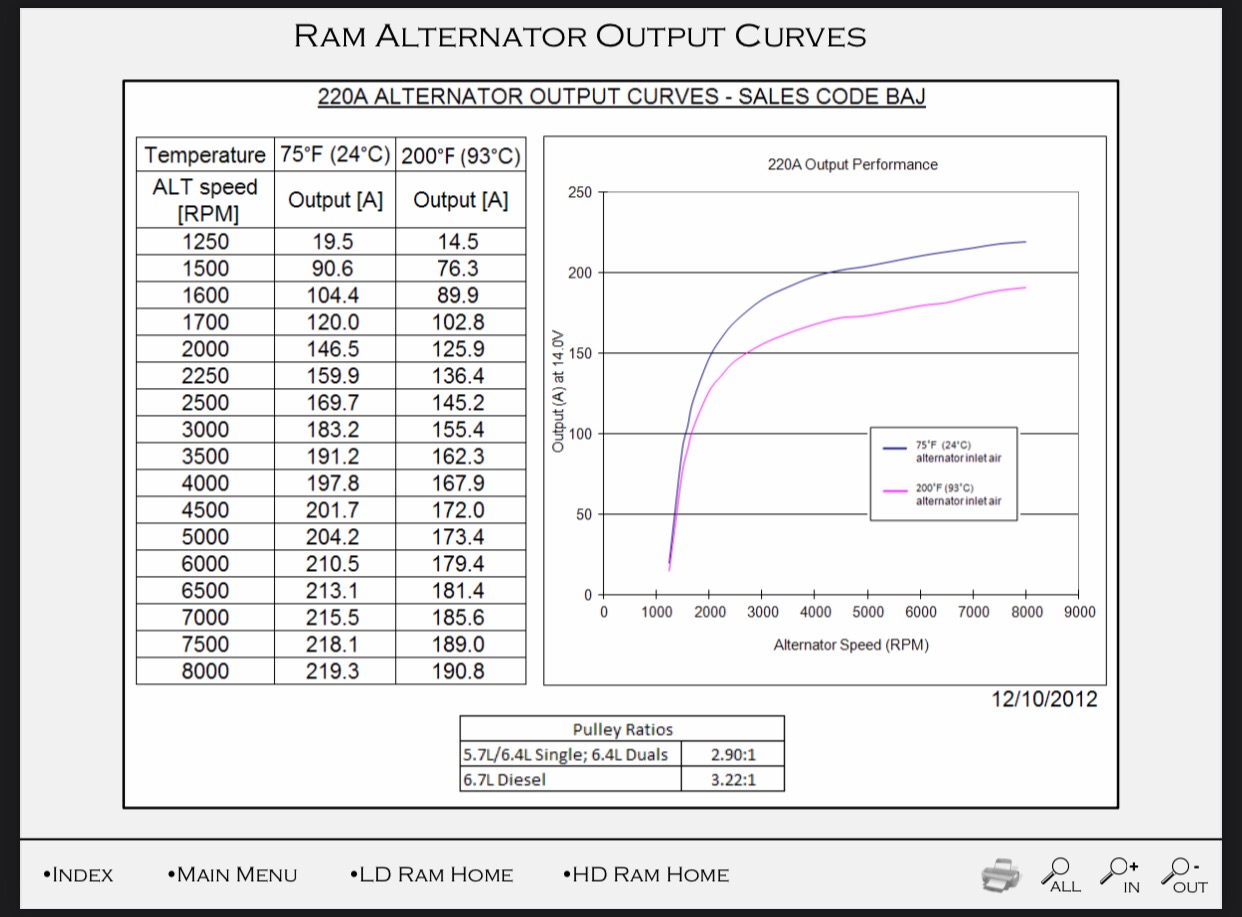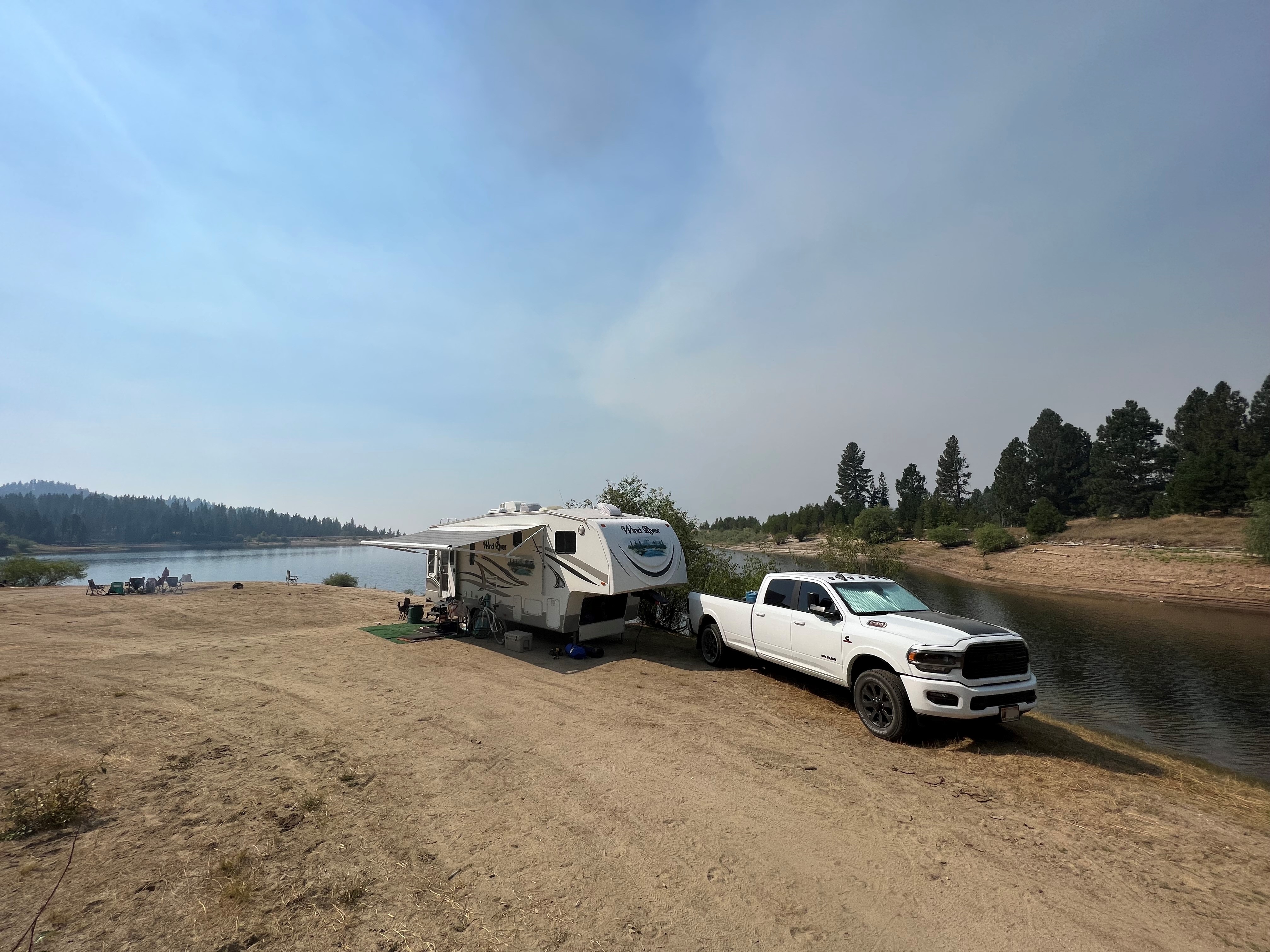
Everything posted by AH64ID
-
Battery group size?
@Mopar1973Man I don’t know why you would get a kick out of that. smh It’s no different that saying if I said I don’t understand people want more power, the stock hp would have got you all the way to 429K, more isn’t needed. It’s a fairly simple thing, more CCA’s means better cranking. It doesn’t mean they are needed, it just means better cranking. Better cranking is a good thing, and they will start better. period. You added 60 CCA’s per battery, try dropping 60 CCA’s per battery and see how much the truck likes it.
-
Winter blues
We’ve had our camper out 3x so far this year, plenty of cold and snow. Low of 6° and 6-8” fresh on one trip for ski camping. A true 4 season camper is a great thing for Idaho winter camping... I guess one weekend was in Oregon thou 🤣, and was cold enough the river iced over.
-
Lithium Batteries for the RV, Good or Not so Good?
Which Xantrex charger do you have? I have one of their inverters in my 5th wheel is like it. My Progressive Dynamics PD4655 does 15 minutes of "equalization" every 21 hours once it drops to float/storage. I can also manually select Boost/Normal/Storage modes, which is handy. I personally don't like leaving batteries on a tender when they aren't being used so after the charge drops to 0.0A I turn my battery switch off and just monitor voltage. I did that in September and when I turned the batteries back on 2 weeks ago they were still at 13.1V. If the voltage is above resting voltage the charger is providing that voltage, even if the battery is not absorbing any.
-
Lithium Batteries for the RV, Good or Not so Good?
On the flip side I've seen many a battery fail from lack of use, it's not an easy life either. A standard lead acid battery discharges at approx 5% per month, so in 4 months the voltage on a good battery could be down below 12.5V and dropping fast in the winter.
-
Intercooler Bypass
Just get yourself an EGR... that will warm up your IAT's :-) 16° when I left the house this morning and 23° when I got to work. All back roads and I got ~16-16.5 mpg. I don't have an issue with the ECT or IAT, as the IAT runs about 110°-120° but the dang trans never warms up. Pulled thru the gate after 15 miles with it at 123° and it crept up to 144° by the time I parked a mile later, but that mile is all with an unlocked torque converter, unlike the majority of the drive. Yesterday I took the interstate got just under 18 mpg but the trans was even cooler... oh well. My winter front is off right now since I've been towing. I would block off more than just the radiator. On my 05 the OEM winter front went side to side under the hood and blocked it all, so much that I had to add some velcro to allow airflow over the ambient temp sensor in the lower drivers side corner. There were 4 flaps that could be opened/closed. I generally ran with 4 open above 30° to 50°+, 3 open 20°-30°, etc.. all 4 closed and well sub zero was still a challenge to warm up but held it better. The 05's was much more efficient at keeping temps in than the 18's that just blocks the grill. The 18's works well, but not as well. You can see here how much they block off. https://www.genosgarage.com/product/winter-fr-9402/winter As far as the intercooler bypass I doubt you would see very hot air at low boost as there isn't any compression going on, so I'd steer clear of that endeavor as it would likely ever pay for itself.
-
Lithium Batteries for the RV, Good or Not so Good?
Went camping Saturday night. Temps got down to 15° and we kept the 5th wheel around 58-60° overnight. Batteries weren’t quite full at bedtime, was using the inverter a bit, but they were still at 12.77V the next morning. Still very happy with my 7 year old AGM 6V batteries.
-
Giving the jeep some tlc.
I ran 4.88's and 35's on my 95 4Runner and then my 92 Toy P/U. Both had 22RE's and it was a great combo, gotta love low gears.
-
Lithium Batteries for the RV, Good or Not so Good?
I’m still not sold on them. I do have room to mount 3 of them without losing storage and them staying warm... but I’m not spending 3K for 300AH. Even 2 of them would provide more usable AH than my 300AH 6V’s, but at twice the cost. I am just not convicted they will last 2x as long. I got over 10 years on my last pair of lifeline 6V’s and my current pair are going on their 8th season and I don’t notice any degradation. I am adding solar to my 5th wheel this winter and that will be adequate for how I camp. I’ll probably do 1-2 170W panels.
-
Newest HO Alternator Options
There is likely something else wrong with a truck blowing a 150A fuse on a 136A alternator. It may have occurred with a high amp draw but that just allowed the other failure to manifest. I've done lots of winching over the years with amp draws that have been 2-3x higher than the alternator rating on rigs with 1 or 2 batteries and never had a alternator fuse blow. I would not disconnect the alternator while winching as that will result in even lower voltage and higher amp draw. High amp draw will reduce voltage even on good batteries. When you're talking 400A draws you want as much voltage retention as you can get and that means an operational alternator. The grid heaters are also a great example of voltage drop at high amp draw. 14V to 11V with 180A of grids AND supplemental alternator. Just think what a winch will do to voltage. If the alternator was ONLY to recharge batteries they wouldn't offer high amperage alternators, high amperage power points, and dual alternators for sustained high amperage loads. The way 12V electrical systems work the alternator is providing 100% of the used power while driving, 100%. The main function of the batteries is starting, not supplying power while driving. A shunt on the batteries could easily prove this, if they are charging, even at 0.001A, then there is no draw on the batteries. The driving voltage of 13.4+ V also indicates the alternator is the main source of power while driving since 12V batteries cannot hold that voltage on their own, even the best 12V batteries only sit at about 13.1 fully charged without a load and most sit at 12.7. The only time, aside from rapid power changes while the alternator catches up, you would see the current move out of the battery is when the load exceeds the alternator output.. think grid heaters for most of us Cummins owners. A Group 27 810cca battery has 76 amp hours. Two of them in parallel have 152 amp hours, with 76 of them being usable. A 9000lb Warn winch pulls ~280A at 50% load. That pair of G27's would only allow for 16 minutes of use before damaging the batteries. At 100% load it's less than 10 minutes. That is a lot of winching, but with a 136A alternator that time increases to 30 minutes at 50% and 13 mints at 100% load. A 136A alternator will take 2 minutes to recharge the batteries for every 1 minute of winching at 50%. That may seem like a lot of winch time but that fully depends on the scenario. CCA's are just that, and not relative to battery capacity for high amp loads. Really good deep cycle batteries have high amp hours and low CCA's. On my previous off-road rigs I ran stock alternators, 9000lb winch, and a deep cycle battery. This was because the alternator couldn't keep up with the winch loads and neither could starting batteries. It was a small 4cyl engine so I didn't need a lot of CCA's and made the sacrifice for better winching performance. Still never blew an alternator fuse.
-
Newest HO Alternator Options
Within reason, no it won't. As long as you're not talking a much heavier rotor, which is likely not going to happen at a perceivable amount on these trucks.
-
Newest HO Alternator Options
While that would technically help, it would be such a small effect that it would likely be imperceptible to the alternator. While you're drawing 350A a change of 5-10A isn't going to do much for the alternator as it will be at 100% load either way.
-
Newest HO Alternator Options
Doesn't do much good for the OP when he's concerned about winching. Not much you can do there to reduce the draw, so that's what he needs a bigger alternator over.
-
pulling to left while accelerating
I’ve seen it twice. Once we met in Boise, and the other time I passed him as we were headed camping. It wasn’t too far from his house thou
-
Newest HO Alternator Options
Can’t help you there. I don’t have any knowledge of that company. Will 3rd or 4th gen OEM alternators work on 2nd gens?
-
Newest HO Alternator Options
You’re the one who can say if it’s worth it for you or not. A bigger alternator will absolutely help, but is the cost worth your use?? That’s what you have to decide. Are you sure it’s the diode and not the brushes.
-
Newest HO Alternator Options
If the batteries tested good then it's possible they are. You can easily wear the diodes out with good batteries and a high amp draw, like a winch. The brushes also get eaten very quick when alternators are putting out max amperage for more than a few seconds, like winching.
-
Newest HO Alternator Options
Temp is huge! Here is the output chart for my OEM alternator. At 1500 rpms the difference is 30A from warm to hot air. But at idle a 220A puts out quite a bit more than a 136A does peak.
-
pulling to left while accelerating
That’s not a new trend, unfortunately.
-
Newest HO Alternator Options
Most of us have starting batteries in our trucks which are not designed for loads like a winch. So the batteries and the alternator are to blame for not being able to support the sustained winch loads. Winches can draw up to 400A, so when you’re above alternator output even the best batteries are going to reduce voltage. For a 270A load you really need a batter bank of around 800AH to not have a large voltage drop, even on quality batteries with a full charge. For example my RV has a pair of Lifeline 300AH 6V batteries, very high quality deep cycles. If I put a 150A load on the 300AH bank the voltage is below 11V within seconds. It just from the high draw, as the voltage will go back above 12.9 just as quick when I remove the load (assuming the duration load is short). My 220A alternator makes a huge difference over the 136A I had on the 05, especially with the winch. The winch still out draws the alternator and you rely on the batteries but it’s not as bad. Going from idle to 1500 rpms also make a huge difference in alternator output and voltage drop. If I winches more I would take advantage of the 2nd alternator option on my 18 and have 440A, but I don’t winch often enough to justify it. Don’t forget to upgrade the fuseable link too.
-
pulling to left while accelerating
@Mopar1973ManI have quite a few miles on 3rd gens with 2" spacers and none of them wondered, stock tires or larger. The only time any wondering occurred was due to worn out steering components, and not from the level kit. Even then never anything bad, just not like new. I disliked the 2" level for other reasons, but they always tracked just fine. A 3" level would be horrible for ride quality!
-
Changed turbo and exhaust manifold - now I have white smoke under acceleration
Any updates @leety?
-
Crisis Proportion or Covid Craziness.......
It’s not surprising that Florida is slightly better than the national average on the death rate based on people testing positive, just as with an illness climate does play a role. Here’s the million dollar question, what is the positive rate per capita? That’s what will tell you if the masks are working or not. Death rate of people infected is not effected by masks, nor is it expected to be.
-
Crisis Proportion or Covid Craziness.......
Is that deaths per people with COVID, or deaths per capita? My biggest issue with the masks is that there is no requirement for certain kinds of masks. Cloth masks may reduce spittle and vapor from leaving your mouth but they do nothing for air. The virus easily fits thru a cloth mask. So by mandating masks but not what kind of mask you’re just making people feel better without the science backing it. Surgical masks are great, but only protect others not yourself. N95’s protect yourself but not others. If you look at people working in/around the virus they will have a N95 covered with a surgical mask. This provided 2-way protection, and often a face shield.
-
Carrier bearing shot
The carrier bearing on my 05 started giving me 1st and 2nd gear vibrations around 90K miles, but only when towing. I went to the local driveline shop and asked about having all 3 ujoints and the carrier bearing replaced, and having a 1 piece drive shaft made. The 1 piece drive shaft, with 1550 u-joints, was cheaper than repairing my stock shaft. In the 1 piece went, and wow! It felt like it transferred more power than the 2-piece ever did. Just a more solid feeling, thou I’m not sure you’d fell it with an auto. In terms of greasable vs non, I prefer non for u-joints. The non’s have better seals to keep crap out and are stronger since they aren’t drilled. That being said the stock greasable u-joints on the wife’s 4Runner are approaching 205K miles with 5K mile grease intervals. For steering components I do prefer greaseable.
-
Trac-Loc Clutch replacement
@NIsaacs has a lot more experience with the Trac-Loc than I do. Last time I ran one was in a 1998 Ranger. I hated it, thou I’m sure you never guessed. Unpredictable on snow/ice, no added support in dirt. Scary on slick off camber roads. I had run one in a precious Ranger too, but didn’t learn. You know what they say about fool me twice... it gets expensive after that Anyhow, sold the Ranger and bought a 95 4Runner and put an ARB in it. Traction when needed and open when on snow/ice loved it. Sold the 4runner and bought a Tacoma with a e-locker, like the ARB I loved it. Sold the Taco and bought my 05. Was about to buy a tru-trac and remove the OEM LSD when I learned it was helical too and left it. I’ve been very happy with it, especially for how I use the truck. The 18 has the same OEM helical LSD. I’d love to get a tru-trac in the front of the 18, but have a hard time justifying it to my adult self.



